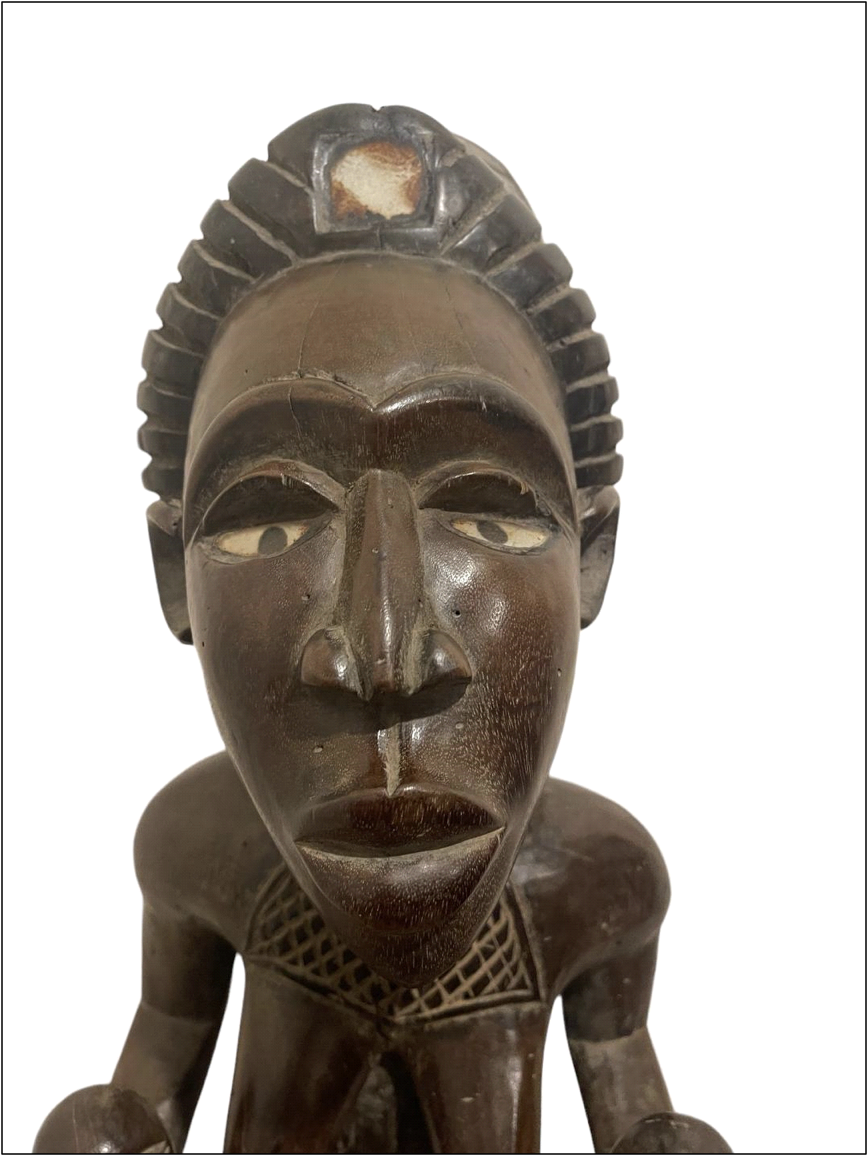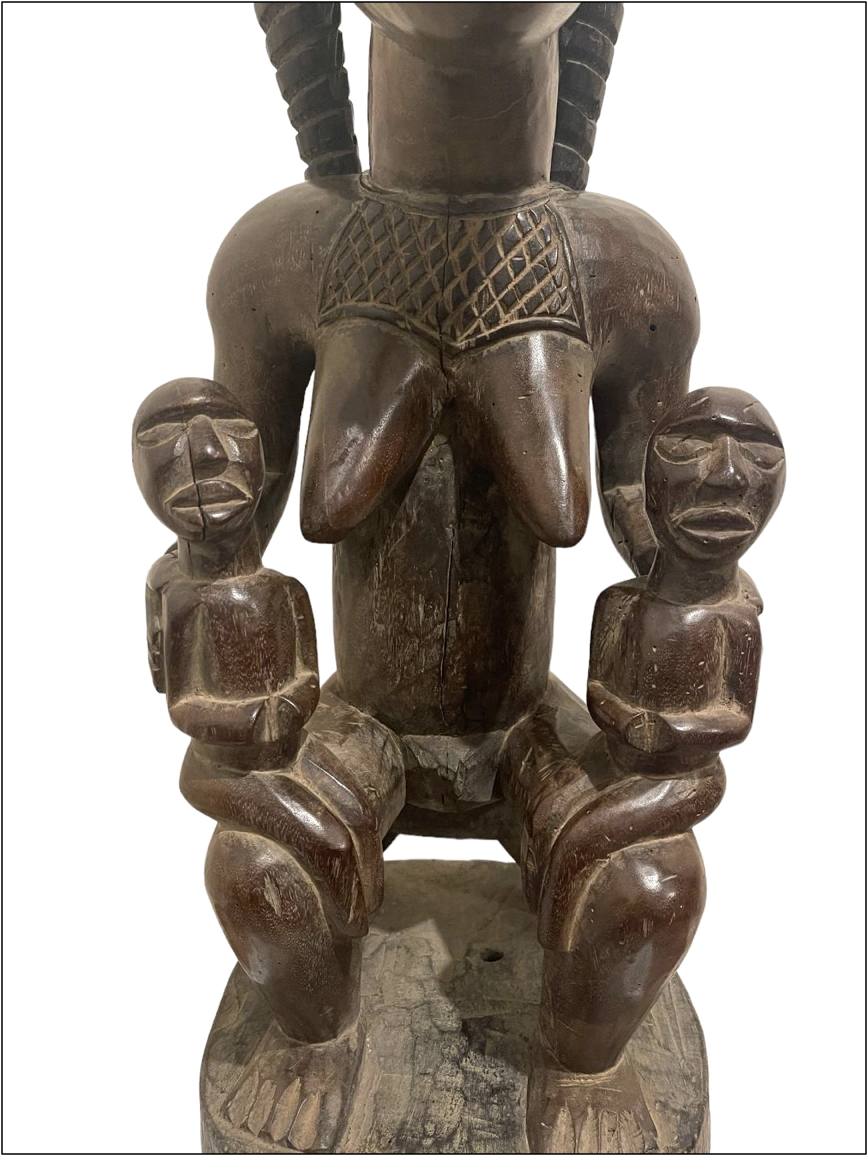Statue Maternity Congo
The commemorative statues known as phemba were designed for women who had lost a child and wanted another. These carvings, generally sophisticated and very graceful, were thought to favor such a happy event. A maternity statue’s effectiveness depended on the dignity of the figure and its youth (shown by the firmness of the breasts) and the jewelry, which augmented its beauty and status. Although the majority of carved figures are made of wood, many important pieces in metal have been found. Among them are numerous metal figures clearly influenced by the Portuguese missionaries -- statuettes of Christian saints, for example. In addition to the figures, crucifixes were also produced, in brass or bronze (using the lost-wax method of casting).
Nail and mirror fetishes are a unique and important phenomenon of Kongo sculpture. In the Kongo, all these fetishes are called nkisi. Nkisi means “medicine”. Historically, there were two types of nkisi, public and private, with some having vital democratizing roles, as sources of empowerment for rural residents and individuals outside the court. At most basic, the nkisi represents a container of empowering materials or “medicines” called bilongo. The magical substances may be blood along with animal, vegetable, and mineral matter. They are believed to invest the fetish figure with power and make it possible for the devotee to establish contact with the spirit. The “medicines” are generally secured in cavities in the stomach, head, or back to activate the work with the empowering agent.
Materials And Techniques
Wooden
Origin
Democratic Republic of Congo
Years
Mid 20th Century
Height $ Width
21.5cm
10cm
Condition
Excellent
Style
Tribal
Date of Manufacture
Early 20th Century




